Citibank 2012 Annual Report Download - page 49
Download and view the complete annual report
Please find page 49 of the 2012 Citibank annual report below. You can navigate through the pages in the report by either clicking on the pages listed below, or by using the keyword search tool below to find specific information within the annual report.-
 1
1 -
 2
2 -
 3
3 -
 4
4 -
 5
5 -
 6
6 -
 7
7 -
 8
8 -
 9
9 -
 10
10 -
 11
11 -
 12
12 -
 13
13 -
 14
14 -
 15
15 -
 16
16 -
 17
17 -
 18
18 -
 19
19 -
 20
20 -
 21
21 -
 22
22 -
 23
23 -
 24
24 -
 25
25 -
 26
26 -
 27
27 -
 28
28 -
 29
29 -
 30
30 -
 31
31 -
 32
32 -
 33
33 -
 34
34 -
 35
35 -
 36
36 -
 37
37 -
 38
38 -
 39
39 -
 40
40 -
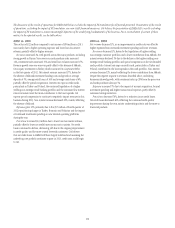 41
41 -
 42
42 -
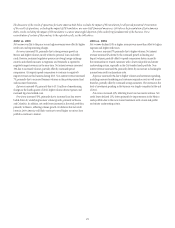 43
43 -
 44
44 -
 45
45 -
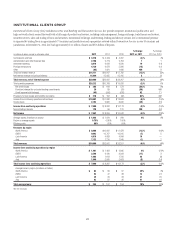 46
46 -
 47
47 -
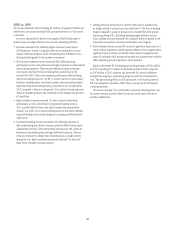 48
48 -
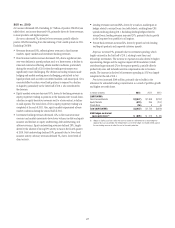 49
49 -
 50
50 -
 51
51 -
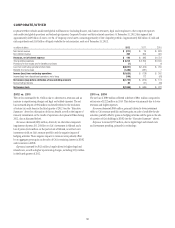 52
52 -
 53
53 -
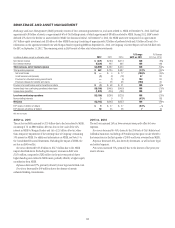 54
54 -
 55
55 -
 56
56 -
 57
57 -
 58
58 -
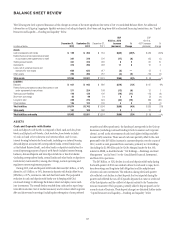 59
59 -
 60
60 -
 61
61 -
 62
62 -
 63
63 -
 64
64 -
 65
65 -
 66
66 -
 67
67 -
 68
68 -
 69
69 -
 70
70 -
 71
71 -
 72
72 -
 73
73 -
 74
74 -
 75
75 -
 76
76 -
 77
77 -
 78
78 -
 79
79 -
 80
80 -
 81
81 -
 82
82 -
 83
83 -
 84
84 -
 85
85 -
 86
86 -
 87
87 -
 88
88 -
 89
89 -
 90
90 -
 91
91 -
 92
92 -
 93
93 -
 94
94 -
 95
95 -
 96
96 -
 97
97 -
 98
98 -
 99
99 -
 100
100 -
 101
101 -
 102
102 -
 103
103 -
 104
104 -
 105
105 -
 106
106 -
 107
107 -
 108
108 -
 109
109 -
 110
110 -
 111
111 -
 112
112 -
 113
113 -
 114
114 -
 115
115 -
 116
116 -
 117
117 -
 118
118 -
 119
119 -
 120
120 -
 121
121 -
 122
122 -
 123
123 -
 124
124 -
 125
125 -
 126
126 -
 127
127 -
 128
128 -
 129
129 -
 130
130 -
 131
131 -
 132
132 -
 133
133 -
 134
134 -
 135
135 -
 136
136 -
 137
137 -
 138
138 -
 139
139 -
 140
140 -
 141
141 -
 142
142 -
 143
143 -
 144
144 -
 145
145 -
 146
146 -
 147
147 -
 148
148 -
 149
149 -
 150
150 -
 151
151 -
 152
152 -
 153
153 -
 154
154 -
 155
155 -
 156
156 -
 157
157 -
 158
158 -
 159
159 -
 160
160 -
 161
161 -
 162
162 -
 163
163 -
 164
164 -
 165
165 -
 166
166 -
 167
167 -
 168
168 -
 169
169 -
 170
170 -
 171
171 -
 172
172 -
 173
173 -
 174
174 -
 175
175 -
 176
176 -
 177
177 -
 178
178 -
 179
179 -
 180
180 -
 181
181 -
 182
182 -
 183
183 -
 184
184 -
 185
185 -
 186
186 -
 187
187 -
 188
188 -
 189
189 -
 190
190 -
 191
191 -
 192
192 -
 193
193 -
 194
194 -
 195
195 -
 196
196 -
 197
197 -
 198
198 -
 199
199 -
 200
200 -
 201
201 -
 202
202 -
 203
203 -
 204
204 -
 205
205 -
 206
206 -
 207
207 -
 208
208 -
 209
209 -
 210
210 -
 211
211 -
 212
212 -
 213
213 -
 214
214 -
 215
215 -
 216
216 -
 217
217 -
 218
218 -
 219
219 -
 220
220 -
 221
221 -
 222
222 -
 223
223 -
 224
224 -
 225
225 -
 226
226 -
 227
227 -
 228
228 -
 229
229 -
 230
230 -
 231
231 -
 232
232 -
 233
233 -
 234
234 -
 235
235 -
 236
236 -
 237
237 -
 238
238 -
 239
239 -
 240
240 -
 241
241 -
 242
242 -
 243
243 -
 244
244 -
 245
245 -
 246
246 -
 247
247 -
 248
248 -
 249
249 -
 250
250 -
 251
251 -
 252
252 -
 253
253 -
 254
254 -
 255
255 -
 256
256 -
 257
257 -
 258
258 -
 259
259 -
 260
260 -
 261
261 -
 262
262 -
 263
263 -
 264
264 -
 265
265 -
 266
266 -
 267
267 -
 268
268 -
 269
269 -
 270
270 -
 271
271 -
 272
272 -
 273
273 -
 274
274 -
 275
275 -
 276
276 -
 277
277 -
 278
278 -
 279
279 -
 280
280 -
 281
281 -
 282
282 -
 283
283 -
 284
284 -
 285
285 -
 286
286 -
 287
287 -
 288
288 -
 289
289 -
 290
290 -
 291
291 -
 292
292 -
 293
293 -
 294
294 -
 295
295 -
 296
296 -
 297
297 -
 298
298 -
 299
299 -
 300
300 -
 301
301 -
 302
302 -
 303
303 -
 304
304 -
 305
305 -
 306
306 -
 307
307 -
 308
308 -
 309
309 -
 310
310 -
 311
311 -
 312
312 -
 313
313 -
 314
314 -
 315
315 -
 316
316 -
 317
317 -
 318
318 -
 319
319 -
 320
320 -
 321
321 -
 322
322 -
 323
323 -
 324
324
 |
 |

27
2011 vs. 2010
Net income decreased 24%. Excluding $1.7 billion of positive CVA/DVA (see
table below), net income decreased 43%, primarily driven by lower revenues
in most products and higher expenses.
Revenues decreased 7%, driven by lower revenues partially offset by
positive CVA/DVA resulting from the widening of Citi’s credit spreads in 2011.
Excluding CVA/DVA:
• Revenues decreased 16%, reflecting lower revenues in fixed income
markets, equity markets and investment banking revenues.
• Fixed income markets revenues decreased 24%, due to significant year-
over-year declines in spread products and, to a lesser extent, a decline in
rates and currencies reflecting adverse market conditions, particularly
during the second half of 2011 when the trading environment was
significantly more challenging. The declines in trading volumes made
hedging and market-making more challenging, particularly in less
liquid products such as credit, securitized markets, and municipals. Citi’s
concerted effort to reduce overall risk positions to respond to a decline
in liquidity, particularly in the latter half of 2011, also contributed to
the decrease.
• Equity markets revenues decreased 35%, driven by declining revenues in
equity proprietary trading as positions in the business were wound down,
a decline in equity derivatives revenues and, to a lesser extent, a decline
in cash equities. The wind-down of Citi’s equity proprietary trading was
completed at the end of 2011. Also, equity markets experienced adverse
market conditions during the second half of 2011.
• Investment banking revenues decreased 14%, as the macroeconomic
concerns and market uncertainty drove lower volumes in debt and equity
issuance and declines in equity underwriting, debt underwriting, and
advisory revenues. Equity underwriting revenues declined 28%, largely
driven by the absence of strong IPO activity in Asia in the fourth quarter
of 2010. Debt underwriting declined 10%, primarily due to lower bond
issuance activity. Advisory revenues declined 5%, due to lower levels of
client activity.
• Lending revenues increased 86%, driven by a mark-to-market gain in
hedges related to accrual loans (see table below), resulting from CDS
spreads widening during 2011. Excluding lending hedges related to
accrual loans, lending revenues increased 25%, primarily due to growth
in the Corporate loan portfolio in all regions.
• Private Bank revenues increased 6%, driven by growth in both lending
and deposit products and improved customer spreads.
Expenses increased 3%, primarily due to investment spending, which
largely occurred in the first half of 2011, relating to new hires and
technology investments. The increase in expenses was also driven by higher
repositioning charges and the negative impact of FX translation (which
contributed approximately 2% to the expense growth), partially offset by
productivity saves and reduced incentive compensation due to business
results. The increase in the level of investment spending in S&B was largely
completed at the end of 2011.
Provisions increased $140 million, primarily due to builds in the
allowance for unfunded lending commitments as a result of portfolio growth
and higher net credit losses.
In millions of dollars 2012 2011 2010
S&B CVA/DVA
Fixed Income Markets $(2,047) $ 1,368 $(187)
Equity Markets (424) 355 (207)
Private Bank (16) 9 (5)
Total S&B CVA/DVA $(2,487) $ 1,732 $ (399)
S&B Hedges on Accrual
Loans gain (loss) (1) $ (698) $ 519 $ (65 )
(1) Hedges on S&B accrual loans reflect the mark-to-market on credit derivatives used to hedge the
corporate loan accrual portfolio. The fixed premium cost of these hedges is included (netted against)
the core lending revenues to reflect the cost of the credit protection.
